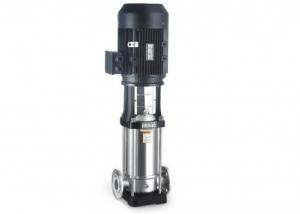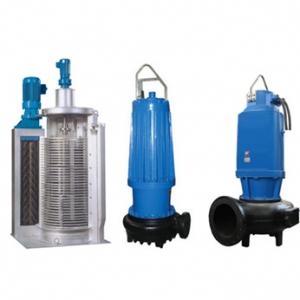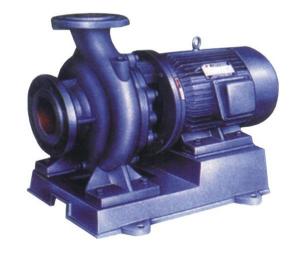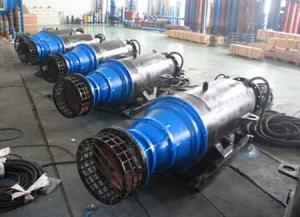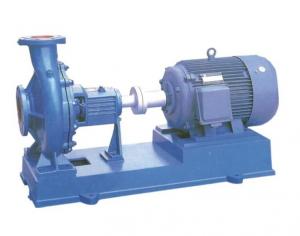IHF Horizontal PTFE Inline Centrifugal Pump, Acid Transfer Pump
- Loading Port:
- Shanghai
- Payment Terms:
- TT OR LC
- Min Order Qty:
- 1 unit
- Supply Capability:
- 100 unit/month
OKorder Service Pledge
OKorder Financial Service
You Might Also Like
Quick Details
Place of Origin: Zhejiang, China (Mainland)
- Model Number: IHF
Theory: Centrifugal Pump
Structure: Single-stage Pump
Usage: Water
Power: Electric
Standard or Nonstandard: Standard
Fuel: electric
Pressure: Low Pressure
Application: chemical
Pump: Acid Transfer Pump
Packaging & Delivery
| Packaging Details: | standard plywood or carton for each acid transfer pump |
|---|---|
| Delivery Detail: | 10 days after receiving pre-payment |
Specifications
Acid Transfer Pump
1. Good performance
2. Long duration
3. Convenient mounting and maintain
Summarize
•The pump has a corrosion-resistant, wear-resistant, high temperature resistant, non-aging, high mechanical strength, non-toxic decomposition, the use of the advantages of wide temperature.
•The pump can be used in transporting strong corrosive medium of any concentration, such as sulfuric acid, hydrochloric acid, nitric acid, acetic acid, aqua regia, strong alkali, strong oxidants and organic solvents, etc.
•Medium temperature: -85 ~ +200 C.
Main Application
Liquids, waste water, the random density acid, alkali and strong oxidant and organic solvent etc.
•pharmacy, petroleum industry
•chemical industry, electroplating industry
•environmental protection, food service industry
• printing and dyeing area
•water treatment, textile industry, medical and health work, etc.
- Q: What is LG water pump?
- The LG in the LG pump should be a brand, without much practical significance.
- Q: where is water pump tempertuer sensor in ford focus 2002
- Look near or one the thermostat housing on Ford products for the temperature sensor.
- Q: How much would it cost if I took it somewhere like midas?
- what variety of noise? additionally, what do you mean by skill of is it solid? They valuable looking autos IMO and that they are able to be solid if dealt with. do no longer assume to make diverse ability from the 420A engine although.
- Q: changed the thermostat. it overheats but cools down a heat bar or two idling at stoplights. i filled up the coolant reservoir when i changed the thermostat, drove it about 2 miles(engine was already up to temp when i started) and it overheated. drove it two miles back going about 35-40 and it never went above normal but was still overheating. checked the reservoir and it was empty. stuffed a hose in it and plugged it up with a towel to force water in to see if it was leaking anywhere, no leaks. while running with the rpms up the top hose is easy to squeeze. makes me think water pump. but if i go over 45 it over heats makes me think clutch fan.
- So if i understand, you are losing water from your system but no evidence of where it is going. I can think of two options. Heater core, but you may get a coolant smell inside the car, steam on the interior of windshield. You can check this by connecting the heater hoses directly, bypassing the heater core. If it still loses water, look for foamy oil on the dipstick or on the oil filler cap. If present then the other guy is right - headgasket. I would also look into flushing the system, or replacing the radiator - it may be clogged.
- Q: We bought a second hand Rover 75, three months later head gasket blew. This was replaced but blew again due to original wet liners. A reconditioned engine was then put in but head gasket blew again due to original water pump. I am not trying to ascertain blame i would just like to know which is accurate as car seller is saying fault of mechanic as should have changed wet liners and water pump and mechanic is saying it is not common practice to change this parts when you replace a head gasket or engine. Thanks for any clarification, especially if you are a mechanic yourself.
- It seems excessive to have to remove the engine to replace a head gasket. But I typically work on American cars, and I've seen the inside of an Altima, it is quite cramped. If I were you, I'd search google for replace head gasket procedure nissan altima and see what it comes back with.
- Q: 1.where is it located and what would I have to remove 1st to get to it. And would I need a torque wrench if so what # would it have to be at when re-installing water pump
- 1990 Toyota Celica
- Q: I have a 1 HP water pump that will pump water through a 1 and 1/2hose. What is the approx. GPM (just to have a reference) of a pump like this?
- The capacity will be limited by the pressure drop. Assume 15-40 GPM depending on the length of the 1 hose. This is provided that the 1 is then split into four 1/2 hoses. Otherwise the flow will be highly restricted by the smaller diameter. The efficiency of a small centrifugal pump is around 50%. The general water pump equation at 50% eff. is HP = GPM psi / 860. So for one horsepower the GPM = 860 / psi Therefore for 20 psi the flow is 43 GPM, at 40 psi it is 21 GPM , at 60 psi it is 15 GPM
- Q: I have a 1997 Honda Civic DX and i recently took it in to have its timing belt and water pump replaced. Since then, I have noticed a change in the cars performance. I have lost both gas mileage and power since i took my car in. The maintenance supposedly took the dealer twelve hours to complete which seemed a little odd to me. Do you think this is linked? I just remember getting a lot more miles to a tank of gas, and my car was about the same speed as a friend of mine's who now smokes me. Thank You.
- ITS MOST LIKELY NOT TIMED CORRECTLY, MAYBE OFF BY ONE OR TWO TEETH. IF THIS REPAIR WAS DONE RECENTLY I WOULD TAKE IT BACK AND TELL THEM THAT THE VEHICLE HAS A LACK OF POWER CONCERN EVER SINCE THEY DID THE REPAIR. THEY SHOULD NOT CHARGE YOU MORE UNLESS THEY FIND THAT IT HAS THIS CONCERN BECAUSE OF ANOTHER PROBLEM. HONDA'S ARE KNOWN FOR DECEIVING TIMING MARKS.
- Q: does aquarium pump go in water?
- If you mean an air pump, No. The air pump should be out of the water preferably above the fish tank, but below the fish tank is fine as long as you have a check valve connected to the airline tubing, which prevents water from entering and damaging the air pump.
- Q: I've noticed after driving my car for a while recently it squeals while accelerating. I'm wondering if its the water pump cause I've had a coolant leak for a while. I poured alluminum sealer in the reservoir and its stopped the leak almost completely though. If it was a broken pump, would this sealer have stopped the leak like it has? I drive a 2000 saturn sl2
- If you have ample room to change a water pump, go for it; however, keep in mind some cars use that belt for timing. If the belt is also a timing belt, take it your branded dealer.
Send your message to us
IHF Horizontal PTFE Inline Centrifugal Pump, Acid Transfer Pump
- Loading Port:
- Shanghai
- Payment Terms:
- TT OR LC
- Min Order Qty:
- 1 unit
- Supply Capability:
- 100 unit/month
OKorder Service Pledge
OKorder Financial Service
Similar products
Hot products
Hot Searches
Related keywords







